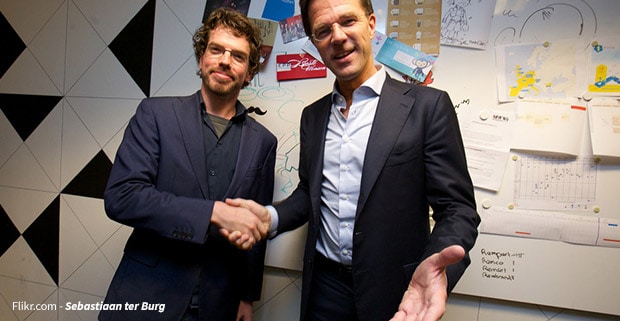Do you jump out of bed every day with your mind whirling with creative thoughts, bursting with imagination and amazing ideas?
No?
Welcome to the human race. There are those awesome creative types among us that can really come up with some amazing things on a consistent basis with ease. But many of us have to work at least some of the time, if not most of it, to access that sustained creativity within. It isn’t just a flash-in-the-pan trait, but rather something you practice.
You have to be rested and healthy for your job in the morning, so you have to cut some things off, and resist the temptation to go to everything you’re invited to
Check out Sean Blanda’s tips to access and train your inner creative genius, as written in 10 Creative Rituals you Should Steal.
1. Write Every Day, best-selling author Cheryl Strayed
“I often recommend writing as a tool for self-discovery because it’s helped me so much. I use writing in different ways: I write as an artist, but I also write when I’m just trying to work through something or make a tough decision…That’s because it’s a way to essentially practice your thoughts and see what’s there. Writing forces you to locate your clarity,” Blanda quotes Strayed. Wondering if writing everyday helps those of us who aren’t authors? Clickherefor some pretty solid proof.
2. Keep Tear Sheets to Get Inspired, designer Sarah Foelske
Foelske saves tearsheets from magazines, invitations to events she enjoyed, appealing packaging and anything that she finds inspiring. She saves them in books, not in any particular categorization. When she needs inspiration, she will take the book out and flip through it for visual inspiration until something clicks.
3. Take a Nap, news anchor Pat Kiernan
“I’m super protective of my nap, and my schedule generally. You have to learn how to say no. I usually keep a pretty hard line about that. You have to be rested and healthy for your job in the morning, so you have to cut some things off, and resist the temptation to go to everything you’re invited to.”
Einstein actually had a theory on the perfect power nap timing. Click here for more info.
4. Envision What You Will Be Remembered For, Rapha founder Simon Mottram
Mottram often writes fake business articles to help him plan. These articles talk about revolutionizing the market. Does it work? According to Blanda, Rapha wrote one of these fake pieces in 2005. “Five years on, the way it described the business was actually very accurate to where we were…in December 2010,” Rapha says.
5. Get Out of the Building and into the Observable World, Radio host Garrison Keillor
“I don’t think that one should sit and look at a blank page. The way around it is to walk around with scrap paper and to take notes, and simply to take notes on the observable world around you. If you walk into this room and see these great columns and think this was once a savings bank, you could put those two things together, and make some notes here – that would be the start of something,” Keillor is quoted as saying.
6. Engage in Morphological Synthesis, artist and filmmaker Ze Frank
According to Frank, morphological synthesis is a way of segmenting your thinking process into parts and exploring the boundaries of creativity. Here is the example that Frank provided Blanda:
Generally, when I have an idea I start with a sense of scale. Let’s say Procter & Gamble has a new toilet paper. If I’m trying to generate ideas around it, the first thing I’d do is take a general imagination run into scale. What happens if you have no toilet paper? What happens if you have way, way too much toilet paper? What’s the smallest type of toilet paper that you would ever use? What would an incredibly large toilet paper look like? Who is someone that never uses toilet paper? Who is someone that uses it constantly? What can you do with 10,000 rolls of toilet paper? What would a world with no toilet paper look like?
